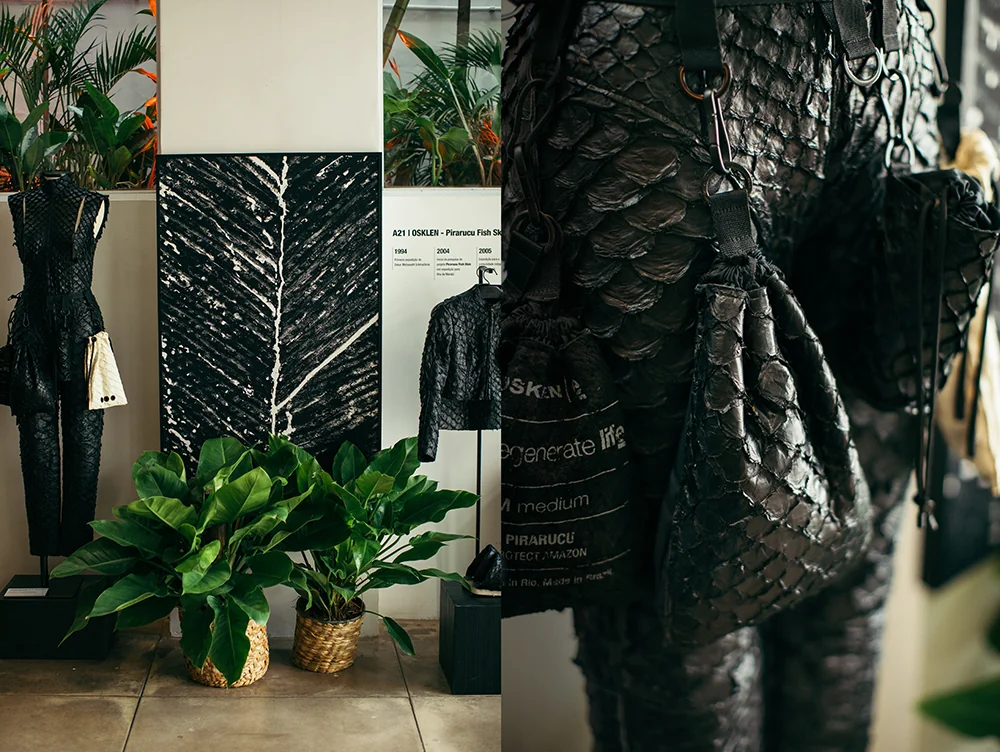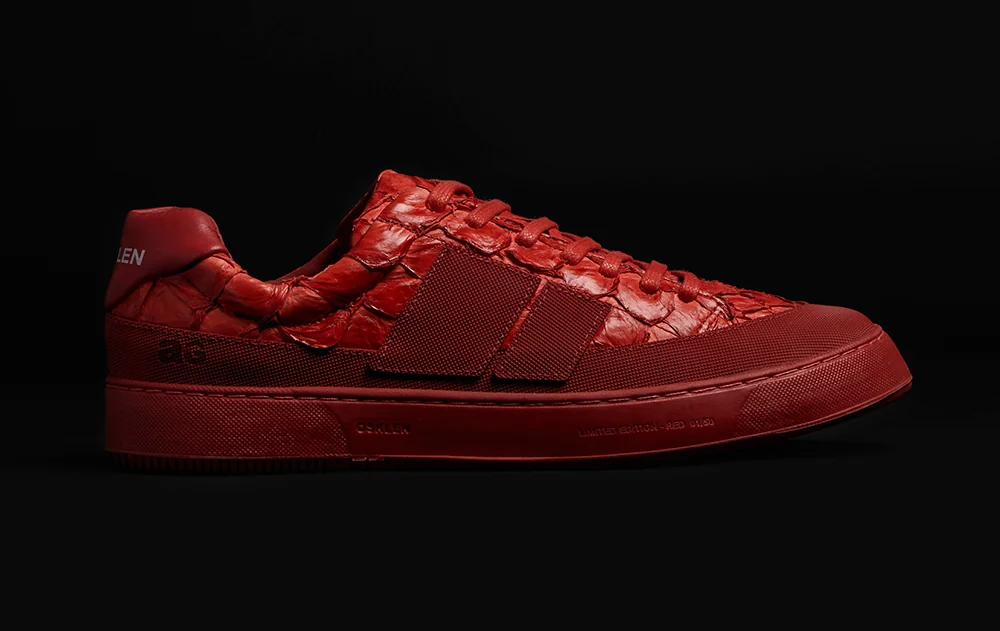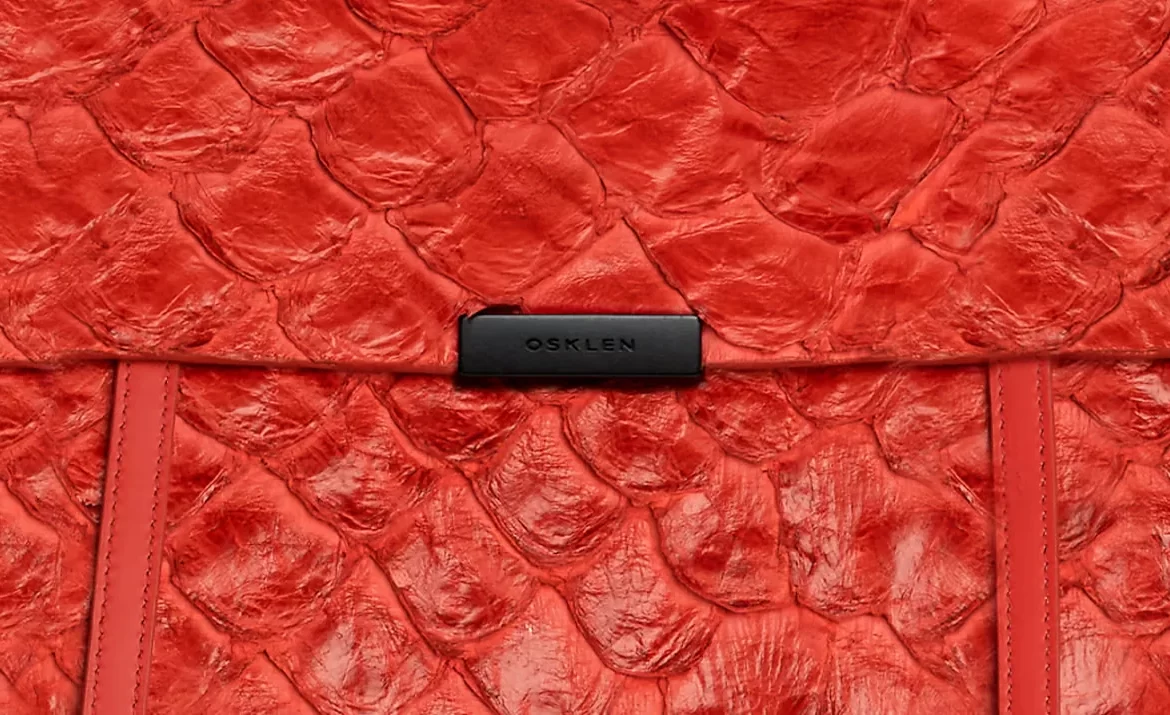Pirarucu Fish Skin: New Luxury, now even more sustainable
Discover how Osklen revolutionized sustainable fashion with pirarucu skin. Learn about the history, new collections, and cultural impact of the Pirarucu Fish Skin project.
In 1994, Oskar Metsavaht, creative director and founder of Osklen, embarked on his first expedition to the Amazon. Ten years later, still captivated by the power of nature, he launched the Pirarucu Fish Skin project on Marajó Island, in northern Pará state. This initiative was supported by Fernando Campos, founder of the Nova Kaeru tannery, and experts from Instituto-E. The main discovery was that the pirarucu, a fish essential to the diet of the Amazonian people, often had its skin discarded. Oskar recognized the potential of this material, with its firm texture, unique pattern, and rustic appearance, and decided to repurpose it to create sustainable and innovative accessories.
Osklen's first major creation using pirarucu skin was the Flap Shoulder Pirarucu Bag, a piece that became iconic and is the only Made in Brazil creation in the collection of the Victoria & Albert Museum in London. The project also earned the brand several international awards, including the 2019 Green Carpet Challenge Award from Eco-Age and Oskar Metsavaht's nomination as a "Future Maker" by WWF UK in the Deeper Luxury Report.

Celebrating 15 Years: New Reinterpretations of Pirarucu Fish Skin
Red Edition: The Homenagem to Indigenous Peoples
To celebrate the project's 15th anniversary, Osklen launched the Red Edition, a limited edition of accessories in the color "annatto red." This line celebrates the brand's activist roots in support of Brazil's indigenous peoples. The collection includes ten Pirarucu Small Backpacks, ten Pirarucu Weekend Bags, and 120 pairs of Sneaker AG | Amazon Guardians. These items will be available exclusively at stores on Oscar Freire and Vila Madalena streets in São Paulo, and Maria Quitéria in Ipanema, Rio de Janeiro, as well as on the brand's website.



Exclusive Clothing: Fashion and Sustainability
For the first time, Osklen offers clothing made from black pirarucu skin, sold exclusively by order. These pieces are produced on a small scale in the in-house atelier and developed using a meticulous manual process, overseen by Oskar Metsavaht. Items include skirts, vests, and jackets, bringing the essence of the runway to everyday wear.
The company's commitment to creating sustainable fashion, combined with its appreciation of national culture and indigenous traditions, has made it one of Brazil's most respected and innovative brands. The longevity of the Pirarucu Fish Skin project is a testament to the brand's commitment to sustainability and social responsibility.
No Core: The Aesthetics That Defy Fashion Standards
What is No Core? The concept of No Core literally translates as "without a core," reflecting a fashion philosophy without fixed patterns. In other words, an approach that embraces fluidity and the combination of disparate elements, promoting individuality and personal expression. Thus, a No Core look can mix utilitarian pieces with classic tailoring or a romantic look with punk accessories, creating unexpected and unique juxtapositions.

A Commitment to Sustainability and National Culture
Osklen has stood out in the fashion scene for its incredible pieces, with an unwavering commitment to sustainability and social responsibility. The Pirarucu Fish Skin project is a clear example of this commitment, combining innovative design with the reuse of materials that would otherwise be discarded. The appreciation of national culture and the traditions of indigenous peoples, as well as the promotion of sustainable practices, make the brand a source of national pride.
The brand not only cares about its environmental impact, but also about promoting fashion that respects and celebrates Brazilian cultural diversity. Thus, it continues to be a benchmark in sustainable fashion, demonstrating that it is possible to create high-quality pieces with unique designs, while also strengthening the environment and local culture.
